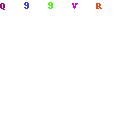I have spent a great deal of time reading this forum material and I have finally ran my first TMCC equipped engine last evening.
I am running @ 58 feet of Fastrack currently with no switches because I want to make sure I get those right beforehand.
I also spent a lot of time making sure that I wired my track using the suggested star wiring intervals.
I measured the voltage on every piece of track to assure no power drops.
The Cab1 experience is great. I'm using a ZW-C with 1 135 watt power brick.
It took some time getting used to the Cab1 but I think I'm doing OK so far.
This is truly an exhilarating experience for someone just starting out with the hobby again.
I'm looking forward to expanding my knowledge and learning from everyone here.
I just want to thank you all for providing such a valuable resource to those just entering this hobby.
Regards,
Rob






